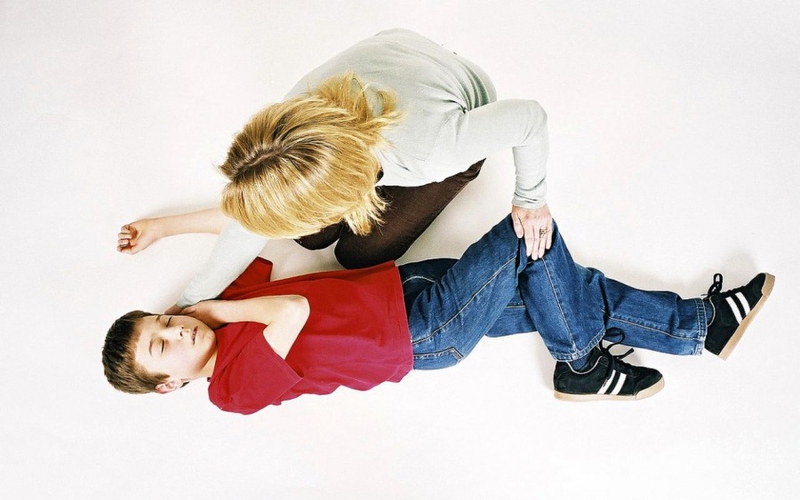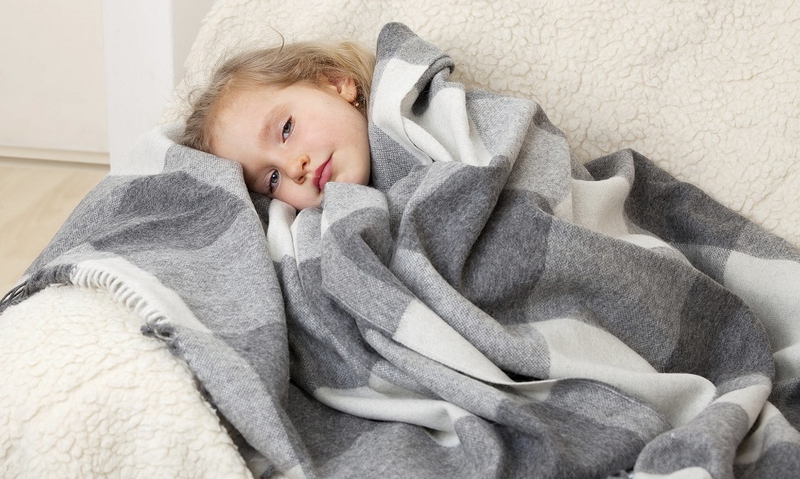What is happening inside the brain of a child who is having a seizure? Put simply, the brain contains billions of nerve cells called neurons. These neurons communicate with each other using tiny electrical impulses. When many neurons send out an electrical impulse at the same time, the brain becomes overwhelmed and a seizure occurs. Symptoms of a seizure may include unusual behavior, muscle spasms and even loss of consciousness. Under certain circumstances, such as fever, lack of oxygen, head trauma, or illness, it's possible for anyone to have a seizure.

How Can You Help a Child Who Is Having a Seizure
Major Seizures
Major seizures involve convulsions and stiffening or jerking movements of the limbs. They may also be referred to as convulsive seizures, tonic-clonic seizures, or a fit. Steps to respond to a major seizure include:
Stay calm and reassure others that everything is under control.
Prevent injury: Keep your child away from sources of danger, such as stairways or busy streets; remove sharp or hard objects that could cause injury; and do not hold down a child who is having a seizure. If your child appears to briefly stop breathing during a seizure, don't worry--this is expected and does not usually require CPR.
Pay attention to how long a seizure lasts. Take note of when the seizure starts and stops. Call 911 if the seizure lasts longer than 5 minutes.
Make your child comfortable: remove glasses, roll her onto her side, and loosen any tight clothing around her neck.
Do NOT put fingers or other objects into the mouth for any reason, including to remove food. It is impossible for your child to "swallow her tongue", as many people believe.
Keep bystanders away. Only one or two people are needed to provide first aid--it can be embarrassing for a child if she realizes that many people are watching her have a seizure.
Prevent choking. Do NOT give your child food, water, or medications until the seizure is over.
Be supportive after the seizure. Explain what happened to your child, offer comfort, and help her clean up if she urinated or had a bowel movement during the seizure.
After the seizure, provide acetaminophen for minor pain. If your child has severe pain, contact her doctor.
Minor Seizures
Minor seizures include absence seizures, simple partial seizures, or complex seizures. During minor seizures, the child may "go blank" for several seconds, seem confused, or display strange behaviors. They may also stay conscious during a seizure and be able to describe what happened afterwards. To help a child having a minor seizure:
Stay calm and look for a medical identification bracelet;
Take the child away from areas with potentially hazardous objects;
Time the seizure;
Stay with the child to reassure and comfort them;
Try to provide privacy by keeping other people away;
Follow the steps discussed for major seizures if convulsions develop;
Special treatment for absence seizures: The vast majority of children outgrow absence seizures by adolescence, but if absence seizures are causing problems, an anti-seizure medication can be prescribed.
Special treatment for simple partial seizures: During a simple partial seizure, the only intervention needed is to keep the child safe. Otherwise, treatment options for a child with simple partial seizures are individualized and may include medications, nerve stimulation, special diets, or surgery. Clinical trials may also be available.
Special aid for complex partial seizures:
If the child is walking or running, use yourself as a barrier between the child and dangerous objects;
Don't restrain the child unless absolutely needed;
Approach the child from the side with caution if you need to touch him, and speak softly so that he does not feel threatened;
After the seizure, explain where he is, what happened, and give him time to rest and recover.
Seizure Under Specific Circumstances
When in water: support the child, keep his head above water, and get him out of the water as soon as possible. Check to see if he is breathing and perform CPR if needed. Always have the child checked by a doctor as soon as possible, and make sure that teachers, babysitters, and relatives are aware of your child's seizures.
If seated: leave the child seated, gently support the head, and remove him or her from the seating device after the seizure is over and roll the affected kid onto his or her side.
When to go to the hospital: You don't need to go to the hospital after every seizure, but seek medical attention, if:
It is the child's first seizure
The seizure lasts more than 5 minutes
Another seizure quickly follows the first one
The child is unconscious or having trouble breathing after the seizure
The child has diabetes
The child has been injured
The seizure happens in water




View All Comments /Add Comment